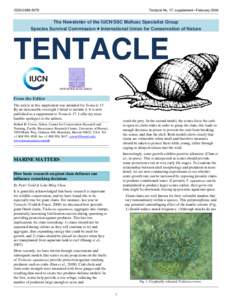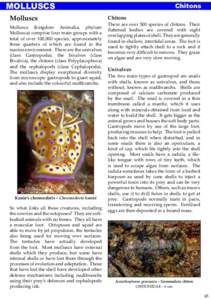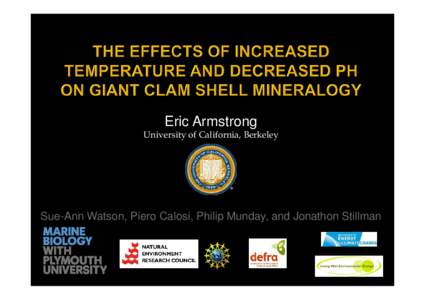1 | Add to Reading ListSource URL: www.hawaii.eduLanguage: English - Date: 2009-02-05 14:37:48
|
|---|
2 | Add to Reading ListSource URL: www.daveharasti.comLanguage: English - Date: 2008-05-18 00:48:21
|
|---|
3 | Add to Reading ListSource URL: www.oceanacidification.org.uk- Date: 2014-07-03 12:41:44
|
|---|
4![CTSA Publication No[removed]Nursery and Grow-out Techniques for Giant Clams (Bivalvia: Tridacnidae) Simon Ellis CTSA Publication No[removed]Nursery and Grow-out Techniques for Giant Clams (Bivalvia: Tridacnidae) Simon Ellis](https://www.pdfsearch.io/img/de4ebaddbdc0182bc91ad2c91e6cbd05.jpg) | Add to Reading ListSource URL: www.ctsa.orgLanguage: English - Date: 2010-09-16 17:26:29
|
|---|
5 | Add to Reading ListSource URL: www.ctsa.orgLanguage: English - Date: 2010-09-16 17:34:09
|
|---|
6 | Add to Reading ListSource URL: www.comparativephys.caLanguage: English - Date: 2008-07-18 10:43:21
|
|---|
7![AC22 Doc[removed]Annex 8c AC22 Doc[removed]Annex 8c](https://www.pdfsearch.io/img/5140cab16508f6134e22d7154a1b4c1a.jpg) | Add to Reading ListSource URL: www.cites.orgLanguage: English - Date: 2013-09-10 14:07:21
|
|---|
8![AC22 Doc[removed]Annex 8g AC22 Doc[removed]Annex 8g](https://www.pdfsearch.io/img/07e707d8ded4a20010a2b90acdf59ae5.jpg) | Add to Reading ListSource URL: www.cites.orgLanguage: English - Date: 2013-02-05 13:13:17
|
|---|
9![AC22 Doc[removed]Annex 8f AC22 Doc[removed]Annex 8f](https://www.pdfsearch.io/img/b50e692473fa1b5e559bdf62b7dc3031.jpg) | Add to Reading ListSource URL: www.cites.orgLanguage: English - Date: 2013-02-05 13:13:17
|
|---|
10![Reference: Biol. Bull. 200: 336 –343. (June[removed]Morphology of the Symbiosis Between Corculum Reference: Biol. Bull. 200: 336 –343. (June[removed]Morphology of the Symbiosis Between Corculum](https://www.pdfsearch.io/img/d2d2d55cc7e1242da329dfc75da961bf.jpg) | Add to Reading ListSource URL: www.biolbull.orgLanguage: English - Date: 2001-06-27 23:12:15
|
|---|